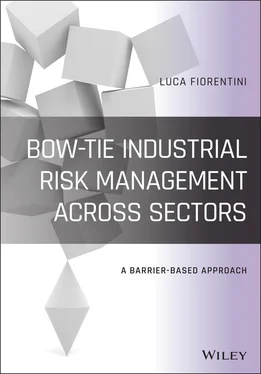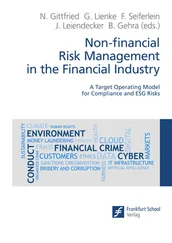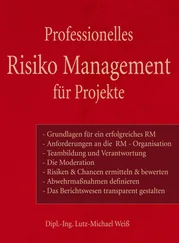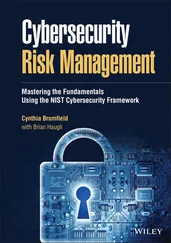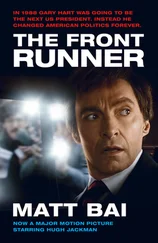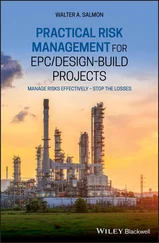In this evolving context, the barrier‐based approach named Bow‐Tie represents a successful methodology to approach risk analysis in a consistent and robust manner. The method allows a synthetic and powerful control of multiple hazard scenarios, clearly differentiating between proactive and reactive risk management.
In this book Dr Fiorentini clearly shows the applicability and the advantages of the methodology to various situations. He shows that, once all the hazard scenarios have been correctly identified and well defined, the definition of the most appropriate barriers represents the core of the methodology to ensure risk reduction. In the non‐standard case of civil engineering, for example, the Bow‐Tie method shows how inspections and maintenance operations represent preventive control barriers against the risk of structural collapse, whereas retrofitting, traffic limitations, and active monitoring represent mitigating or recovery barriers.
The wide experience of Dr Fiorentini, along with his clarity and scientific rigour, make the book a unique and comprehensive essay on the Bow‐Tie methodology of risk assessment.
Luca Marmo
Professor of Safety of Industrial Processes, Politecnico di Torino Department of Applied Science and Technology
In over 30 years of mountaineering and ski touring (see an example in Figure 1), I have done thousands of risk analyses, probably more than I have ever done in my professional career. Each preparation for a climb includes risk analysis. Imagine, or remember, if you have the same passion as me, a classic of European ski mountaineering, the high street Chamonix Zermatt. Climbing it takes three days if you are a pro climber, four if you are super‐trained—better five or six if you are merely human—between glaciers, crevasses, overhanging rocks, and descents hanging from a rope with skis on your shoulders. 6,300 m of positive altitude difference, all between 1,600 and 3,800 m of altitude. Risky? Yes. Accidents, even fatal ones, in these environments are not so rare. However, those who do not practice mountaineering tend to overestimate the risks because they do not have the cognitive tools to evaluate them.

Figure 1 Descent from Col du Chardonnet. Is it safe?
Source: Luca Marmo archive photo.
What will be the risk of causing an avalanche, or in any case of being hit by one? And the degree of coverage of the crevasses along the route? Will the snow be sufficient to guarantee the solidity of the snow bridges or will a chasm open under my skis when I least expect it? Will the weather be favourable or will I be surprised by a blizzard at 150 km/h on the glacier? And if so, will I have at my disposal a protective barrier, sufficient clothing, satellite device, material to take care of myself?
In mountaineering, risk assessments are based on often uncertain data. Weather forecasts are really reliable only within 72 hours, the state of a slope can be inferred from the historical weather data of the previous weeks, and the evaluation methods are often deductive and unstructured. Forecasting is fundamentally based on experience and knowledge of the environment. This is why it is wise to maintain substantial safety margins. In my career, undoubtedly many more times I gave up from a climb, evaluating the risks to be more excessive than they weren, than I really got into trouble.
We are luckier in our professional life. We have more reliable data, we are confronted with less uncertain situations. Therefore, we can apply more rigorous and schematic methods. We can clearly identify the functional relationships between the elements of a machine and outline a specific picture of the process knowing in detail the characteristics of the substances used.
The sharpness of the picture we can paint is exceptional when compared to the drawing based on which we decide whether to reach a peak. And so much clarity deserves a schematic and systematic approach. Bow‐Tie and barrier failure analyses are excellent tools for describing the cause‐and‐consequence relationships of both simple and complex systems because they allow the precise identification of the relationships between the initiating causes and unwanted events. Unfortunately, I fear they do not apply to mountaineering, but I am convinced that if you have the patience to reach the end of this book, you will find that they are of great help in your professional activity.
Giuseppe Conti
Head of Legal and Corporate Affairs Italy, ENEL S.p.A.
Risk management and its related methodology are used to represent the main and fundamental tool for the conscious and measured prevention of a series of safety issues that every industrial operator may have to face.
The availability of scientific methodologies continuously updated and developed to facilitate this difficult task for companies is a resource of great value.
This relevance is clearly appreciable to the extent that the set of assessments carried out in advance allows the prevention of the risk of problematic events, or at least the reduction the probability that they will occur. Having implemented evaluation methods such as those covered by this treatise may also help to facilitate the reconstruction of the dynamics and root causes of the event itself.
This last aspect, through the perspective of a legal practitioner, be it a lawyer or a judge, represents an essential technical and scientific support.
The availability of a methodological and scientific approach since the preliminary phase of an event is a fundamental resource for the determination of the causes of a given event, of possible causes, and for the management of the related responsibilities.
The legal issues surrounding safety issues are inseparably linked to technical issues; only a correct scientific reconstruction of the events, causes, and any possible relevant element in the dynamics of the event can allow legal practitioners to manage consequential aspects such as the traceability of the event to the responsibility of one person or another with the consequent distribution of the related burdens, including economic ones, that result from it.
The collaboration between legal experts and experts of analysis, operational risk assessment is essential for the correct reconstruction of the events and for the proper conduct of investigations, checks aimed at the exclusion of responsibility, or the correct attribution of the same.
Claudio De Angelis
General Manager, National Fire Corp, Ministry of Interior, Italy
Hypocrites! You know how to evaluate the appearance of the earth and the sky; why this weather (ton kairon) can’t you evaluate it?
Luke 12, 56
Krónos and Kairós were gods who impersonated the meanings that the Greeks attributed to time, one quantitative and the other qualitative.
Kronos is the abstract time that flows; it is made of seconds, hours, seasons, years; it is what marks the flow of life towards the end and the functioning of things until the end of their usefulness, the place where we are continually placed before our limit.
Kairos ( Figure 2), on the other hand, is qualitative; it is the right time to live (or work); the right time to be or do.

Figure 2 Bas‐relief depicting the god Kairos.
Читать дальше
